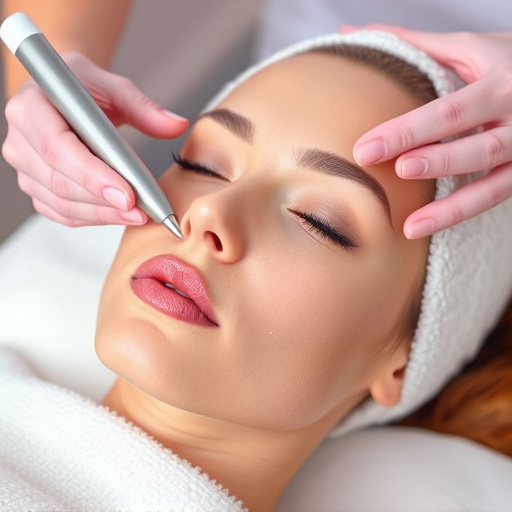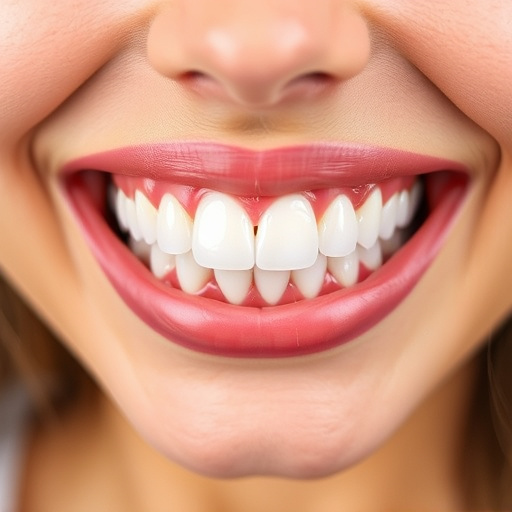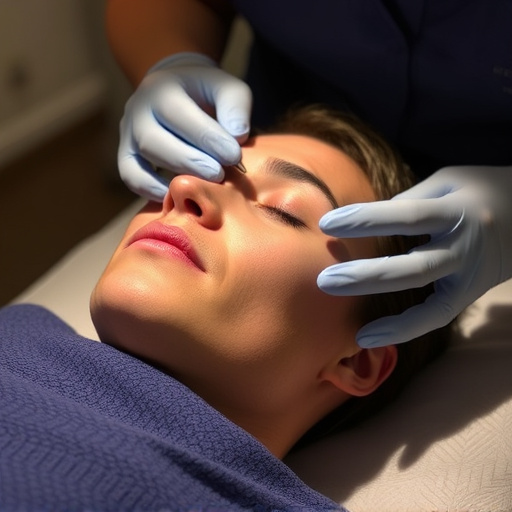Bikini laser hair removal is a popular, non-permanent method using lasers to target and break down hair follicles, requiring several weekly 30-minute treatments. Suitability and pre-treatment guidance from a qualified dermatologist are crucial. Skin type, hair characteristics, and potential side effects like redness or discomfort determine the best method (IPL or Q-switched Nd:YAG laser). Adhering to pre-treatment instructions and regular dermatologist check-ins maximize effectiveness and mitigate risks.
Looking for a permanent solution to unwanted hair down there? Bikini laser hair removal is gaining popularity as a safe and effective method. This article delves into the process, offering insights on choosing the right laser technology tailored to your skin type. We also explore crucial safety tips from dermatologists to prevent potential side effects and complications. Discover how to make informed decisions for a smooth, confident bikini area.
- Understanding Bikini Laser Hair Removal Process
- Choosing the Right Laser Technology for Your Skin Type
- Preventing Potential Side Effects and Complications
Understanding Bikini Laser Hair Removal Process

Bikini laser hair removal is a popular method for achieving smooth, hair-free skin in the sensitive bikini area. During this procedure, a specialized laser device delivers targeted pulses of light energy to the hair follicles, breaking them down and preventing future hair growth. It’s crucial to understand that this isn’t a permanent solution, but rather a series of treatments spaced several weeks apart. Each session typically takes around 30 minutes, and multiple sessions may be needed for optimal results.
Before undergoing bikini laser hair removal, it’s essential to consult with a qualified dermatologist. They can assess your skin type, hair color, and overall health to determine if this procedure is suitable for you. Additionally, they might recommend specific pre-treatment preparations, such as avoiding certain medications or sun exposure, to ensure the best possible outcomes and minimize potential side effects, which can include temporary redness, swelling, or discomfort.
Choosing the Right Laser Technology for Your Skin Type

When considering bikini laser hair removal, understanding your skin type is crucial for selecting the right laser technology. Different lasers are designed to target specific skin and hair characteristics, so choosing the appropriate one ensures optimal results and minimal risks. For instance, those with darker skin tones may benefit from Intense Pulsed Light (IPL) treatments, which are effective in reducing hair growth without the potential side effects of more aggressive lasers on sensitive skin.
On the other hand, if you have lighter skin and coarse hairs, a Q-switched Nd:YAG laser could be an excellent choice for bikini hair removal. This technology is renowned for its precision and safety, offering efficient hair reduction with less risk of skin damage or discoloration compared to other facial treatments like chemical peels. Always consult a dermatologist who can guide you in selecting the best laser procedure based on your unique needs.
Preventing Potential Side Effects and Complications

Bikini laser hair removal is a popular choice for many seeking permanent hair reduction in this area. However, as with any medical procedure, there are potential side effects and complications to be aware of before proceeding. Some common temporary issues include redness, swelling, and slight discomfort at the treatment site. To prevent these, dermatologists recommend adhering strictly to pre-treatment instructions, such as avoiding tanning and certain skincare products for a few days prior.
For longer-term considerations, it’s crucial to understand that individual results vary greatly with laser hair removal. Factors like skin tone, hair thickness, and overall health impact outcomes. A personalized skincare approach, guided by professional dermatologists, can help mitigate risks and maximize the effectiveness of bikini laser treatments. Regular check-ins with a dermatologist ensure your skin health is monitored throughout the process, addressing any concerns promptly to achieve the best possible results.
Bikini laser hair removal can be an effective solution for unwanted hair, but it’s crucial to follow safety tips from dermatologists. Understanding the process, selecting the right laser technology for your skin type, and preventing potential side effects are essential steps to ensure a safe and successful treatment. Remember, consulting with a qualified professional is key to achieving smooth, hair-free results in the bikini area.














